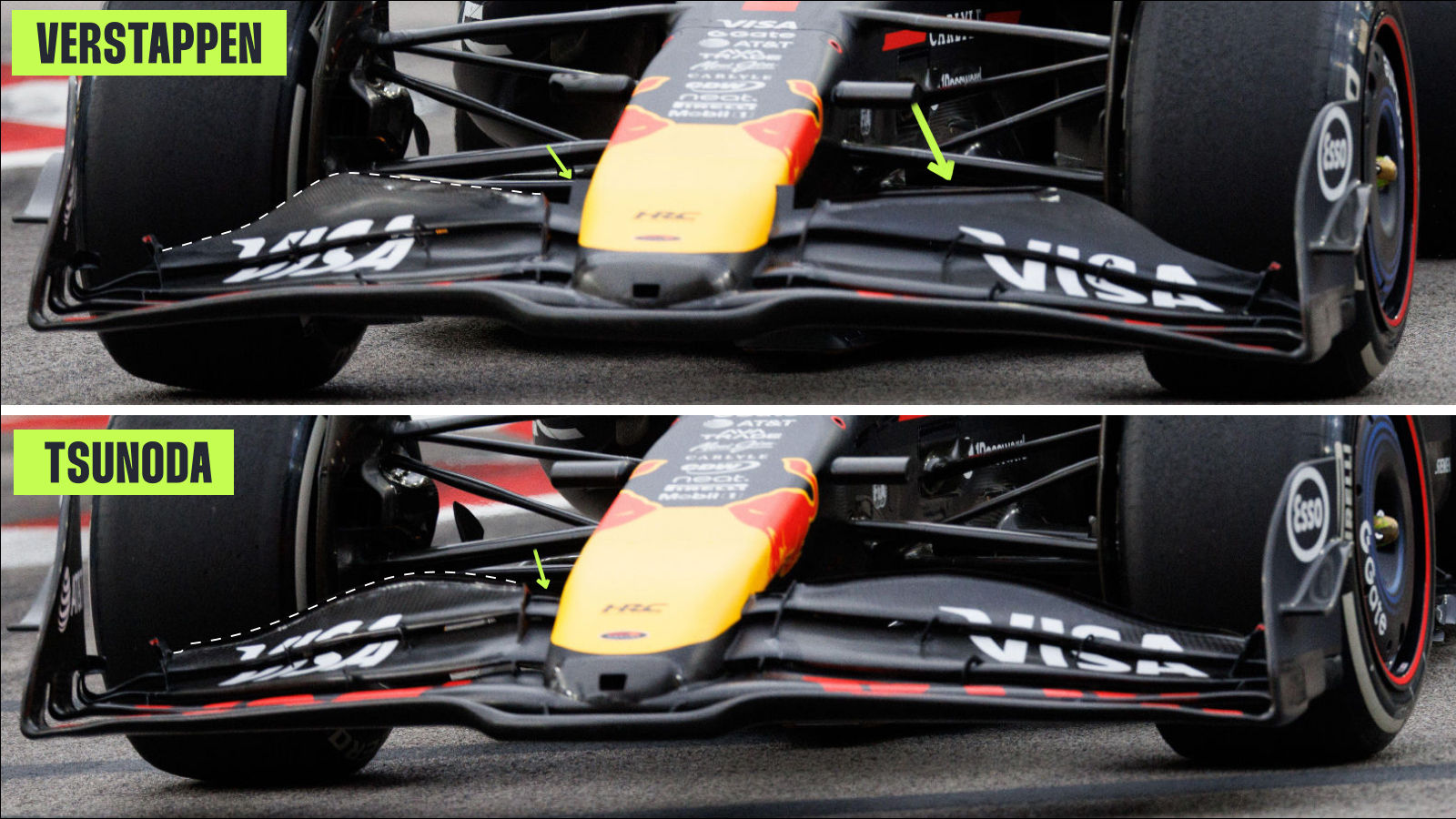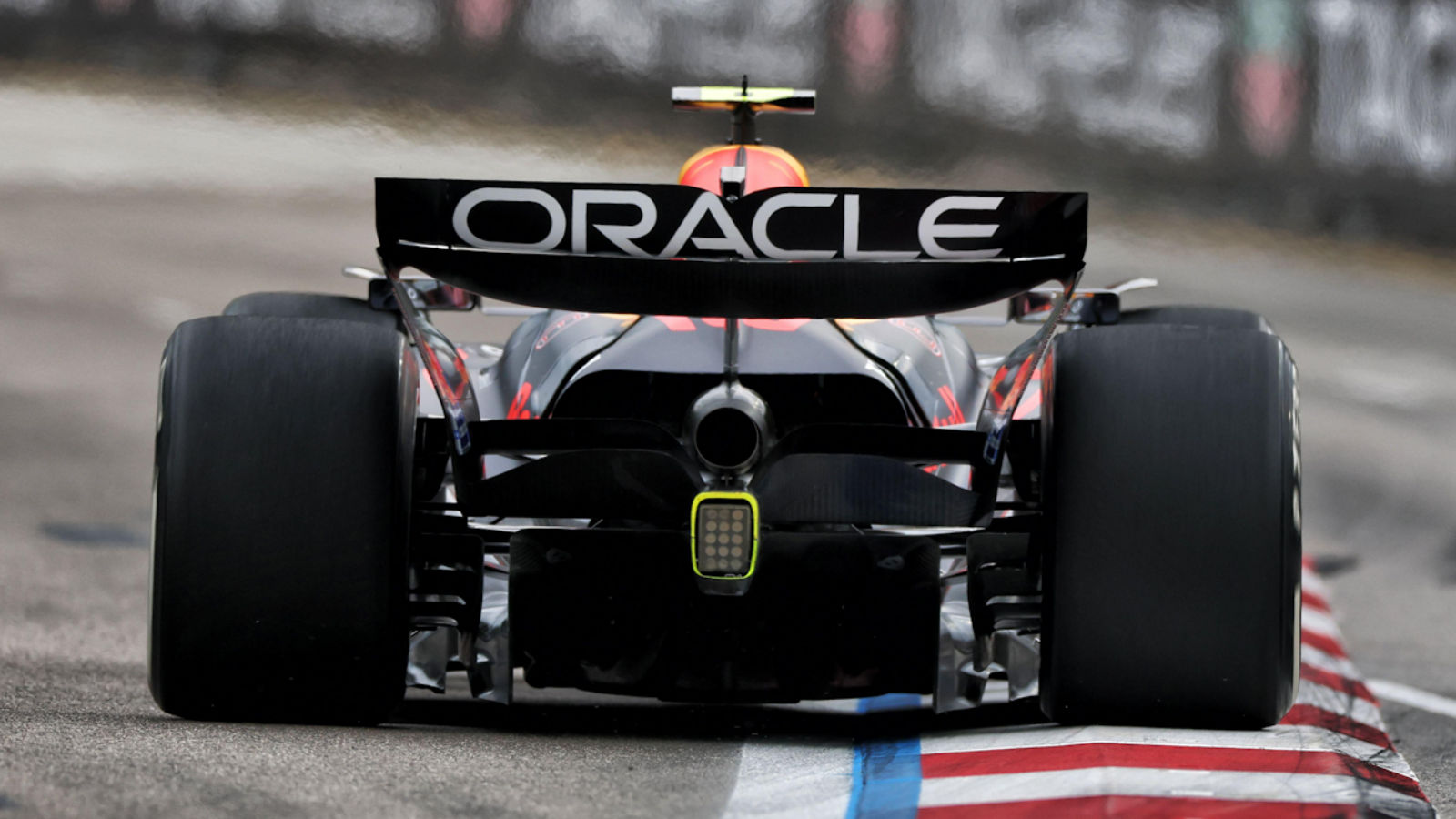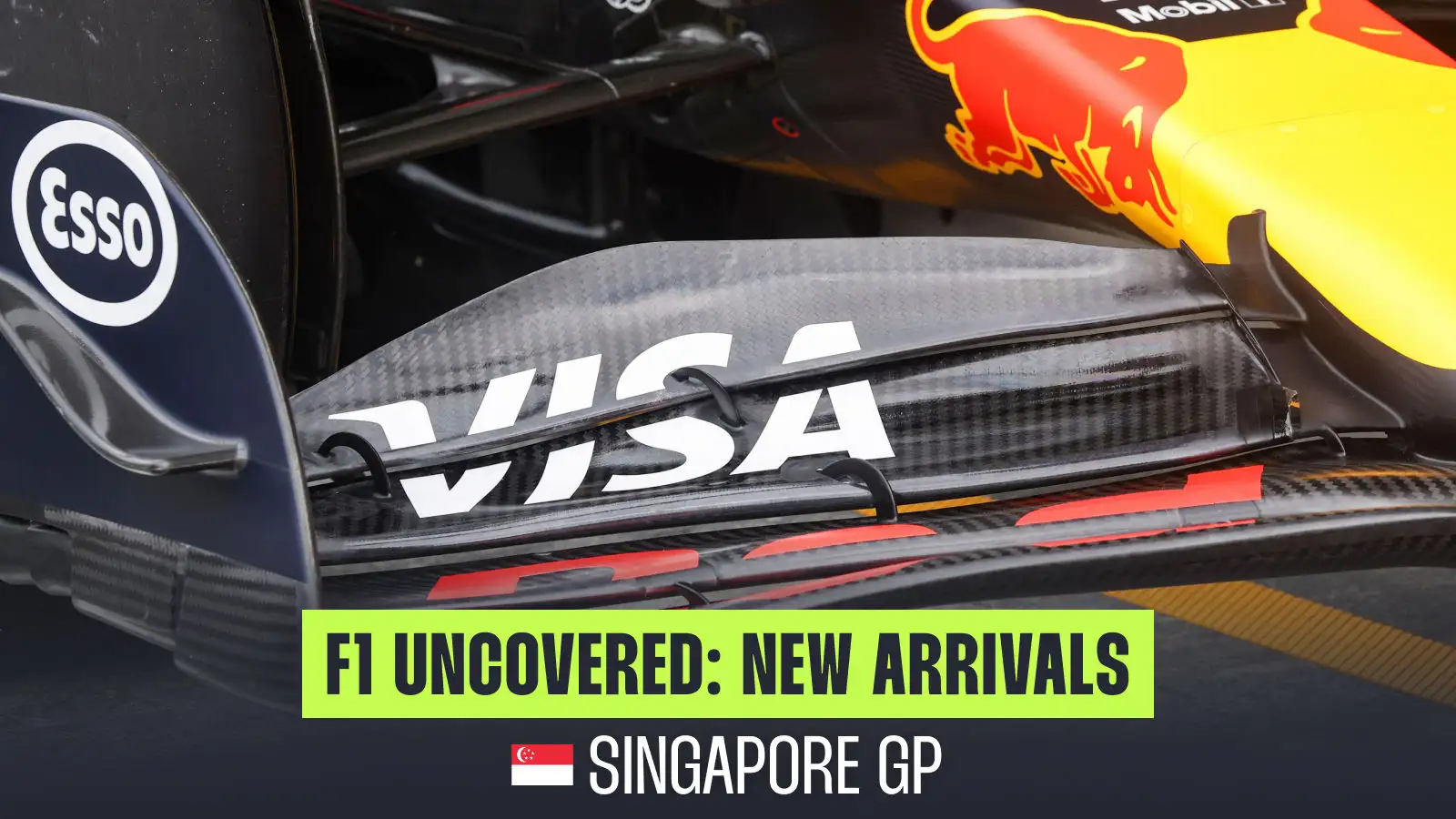Despite the looming introduction of all-new regulations in 2026, for which most of the teams have long ceased development on this year’s car, there’s still plenty of action from the Red Bull camp, which has made significant strides in recent races as a consequence.
And this continues in Singapore, with another new front wing arrangement installed on Max Verstappen’s RB21, whilst it’s also placed some importance on a new cooling arrangement to deal with the demands of the Marina Bay street circuit.
Back in the frame
Red Bull’s pursuit of performance from this year’s challenger continues apace, with the team keen to unlock the latent potential of the RB21 and help Verstappen ascend toward the McLaren duo, who at one point seemed almost out of reach.
It’ll still be a tall order for the Dutchman, as he looks to reel in his championship rivals, but recent results have at least made it a possibility.

The arrival of a new front wing arrangement crystalises the teams desire to find the right balance from the RB21 during the remainder of the season, with the solutions presented this weekend clearly a continuation of the foundational work already done within this new design family.
This includes the use of the wider nose tip section, with the L-shaped upper flap beside it, that was first introduced at the Dutch Grand Prix and has been optimised in conjunction with the other alterations made beside it (small arrow).
And, whilst it’s clear there’s a different trailing edge geometry on the two designs (white dotted lines), there’s also a change in the application of the Gurney flap on both cars too.
On Tsunoda’s front wing the Gurney flap runs across the entire width of the flap’s trailing edge, whereas on the new solution it terminates before the flap descends towards the adjuster.
It’s not just the shape of the upper flap and Gurney flap choices that differ between these two specifications either though, as the secondary flap has also been fettled to provide the necessary flow conditions to support the aforementioned alterations.
It’s also likely that the team has adjusted how the wing performs under load, in order to provide more performance from this family of wings against the backdrop of the conditions imposed since the FIA increased its requirements at the Spanish Grand Prix.

Cooling on the RB21 has also been taken care of with the installation of a much larger outlet at the rear of the engine cover, which the team noted would be “more efficient than opening louvres or creating larger louvres to raise the overall cooling capacity” in the car presentation document released ahead of the event.
This is especially important given that the FIA announced their first heat hazard warning ahead of the event, as it should ensure the power unit and its ancillaries are able to perform optimally around the Marina Bay street track.
Read next: Singapore GP: Verstappen fastest as officials launch Lewis Hamilton investigation

